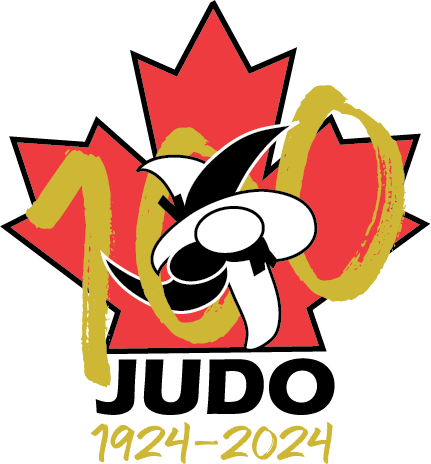Meeting Canada’s Most Influential Women in Judo By Monica Lin Morishita
29 December 2011Montreal seen from France
29 December 2013Bernard Letendre, LL.B., LL.M.
Head of Wealth and Asset Management, Canada
Manulife
Bernard Letendre pratique le judo depuis près de 40 ans, est ceinture noire troisième dan et instructeur au club de judo de l’Université de Toronto. Blogueur actif se spécialisant dans des sujets relatifs au leadership, à la culture d’entreprise et à la responsabilité sociale, Bernard est titulaire d’un baccalauréat et d’une maîtrise en droit de l’Université de Montréal. Membre du barreau du Québec et auteur publié, il compte 25 années d’expérience dans le secteur des services financiers qu’il met à profit dans l’exercice de ses fonctions de chef de la gestion de patrimoine et d’actifs, Canada chez Manuvie.
I started practicing judo as a teenager and right from the start, I was training with girls. Not just in their presence. With them. As a result, I learned at a very young age and from direct experience that girls, as judokas, were every bit as deserving as the boys and were not to be underestimated.
Some of the girls I trained with in my youth went on to have great careers as competitors and some even represented our country internationally with considerable success and honor. I saw one of them at the Nationals exactly a week ago and although we only see each other at judo events for a few minutes every few years, my feelings of friendship and respect towards her have not abated the least bit in thirty years.
For those who are not familiar with it, judo is a form of wrestling, as opposed to Muay Thai or Karate for instance, which fit more neatly within the great family of boxing arts. The difference is quite important for what will follow here so allow me to insist: While some fighting styles focus on kicking and punching, others focus on grappling. Judo is a form of grappling.
Having tried it on a single occasion a very long time ago when we were still dating, my wife thoroughly hated the physical proximity that judo entails. During her first and only class, she ended up with some guy’s foot in her mouth (or so she says) and his sweat all over her face (which is quite common), was thoroughly disgusted by the whole experience and never came back (and I still hear about it almost thirty years later). Like all forms of wrestling, judo entails very close quarters, entangled limbs and all sorts of strange positions. I love judo but it’s not for everyone and many people – men and women – choose to opt out pretty quickly.
Like the first club where I trained as a kid and every other dojo that I visited in all my years, the university club where I now teach runs all classes on a completely co-ed basis. If you’re a member of our club, you will work out with men and women – touching, rubbing, pressing and all. At some point, your partner will end up on top of you, trying to flatten you on the mats to hold you down, or with his or her legs around your neck in an attempt to apply a submission technique. Judo is a form of wrestling and you can’t wrestle with the tip of your fingers.
Children and people who have been doing this for years don’t give it a second thought but it’s always interesting to me to observe the evident discomfort that young adults experience when they first start practicing with people of the other sex. That in itself is already an interesting dynamic but our students come from around the world, with the many cultural differences that this entails. New students are often shy and tentative in how they approach others and the instructors must frequently remind them that they are to work out with everyone – large or small, young or old, more or less experienced, male or female.
That’s all nice and fine you might you ask, but where are the benefits in that? Why not run separate classes for different types of students; for instance, have women work out amongst themselves while the men do the same thing on their own? (Note: many clubs do run children’s classes.)
As I’ve written previously, there is much benefit for all in practicing with a wide diversity of partners. Look at it this way: How could less experienced athletes get the benefit of learning from more experienced ones if higher belts only trained with people of their own rank? How can I learn how to fight someone who’s bigger than me if larger judokas will only practice with people their own size?
It’s much more however than just a matter of learning to spar effectively with different types of partners. Judo has many aims but it was designed, at its core, as a means of moral education. What we do in the dojo is a path – or Dō – towards something greater than being an effective fighter. Fighting, in other words, is a means, not the end. From the start, the founder of judo, Jigoro Kano, meant his art as a humanistic endeavour, a medium for spreading friendship, respect and understanding. As he wrote in 1936:
“Judo should be as free as art and science from external influences – political, national, racial, financial or any other organised interest. And all things connected with it should be directed to its ultimate object, the benefit of humanity.” (1)
Simply put, what ties us to each other is greater than what seperates us and respect towards each other should not be conditional on differences that have no bearing on our humanity. I don’t like working out with men or women because that makes me uncomfortable? What if someone else has an aversion to working out with me because of my race, religion or cultural background? Where does it stop?
One of the key objectives of judo is to help judokas become better people through the development of values such as courage, respect and friendship, to name only those. Fighting or sparring – in which both parties are expected to offer each other some spirited opposition – is a great vehicle for the development of such values because it puts people in real-life situations where failing to take responsibility for others and their wellbeing can have such dire consequences. And believe me, someone who puts you in a triangle choke and squeezes until you tap out can never be mistaken for being fresh with you or making inapproppriate advances. We’re here to do judo together. Full stop.
In the same way that courage and self-confidence can evolve from facing down our fear of going toe-to-toe against others who are (if only in our own minds) larger, stronger or more highly skilled, respect and friendship can grow from the realization that the person I’m training with – whatever his or her size, strength, age, experience, sex, race, cultural background or religion – has my best interest at heart in the true spirit of Jita Kyoei (自他共栄) – that is the spirit of mutual benefit, one of the fundamental principles of judo.
In the dojo, men and women and people of every creed and background, size and strength, learn to read each other, deal with each other on equal terms and not be intimidated by each other. In the specific case of boys and girls – and later of men and women – students gradually learn through direct and often uncomfortable physical contact that not only sparring, but all other types of interactions between the sexes (and people in general), can and must be approached in a spirit of mutual respect. Prejudice is often the result of ignorance and getting to engage constructively and on an equal footing with others who are different from us is simply one of the best ways of learning to treat each other with respect.
Unfortunately, no system of education is perfect and there are people who practice judo for years without ever internalizing the values that are so dear to many of us. In the dojo as in life more broadly, there will be the occasional bad apple. But that’s not a reason for throwing in the towel. There are many more good and well-meaning people who get it, or perhaps just need the opportunity to see – or in a very physical way to feel – a different perspective.






